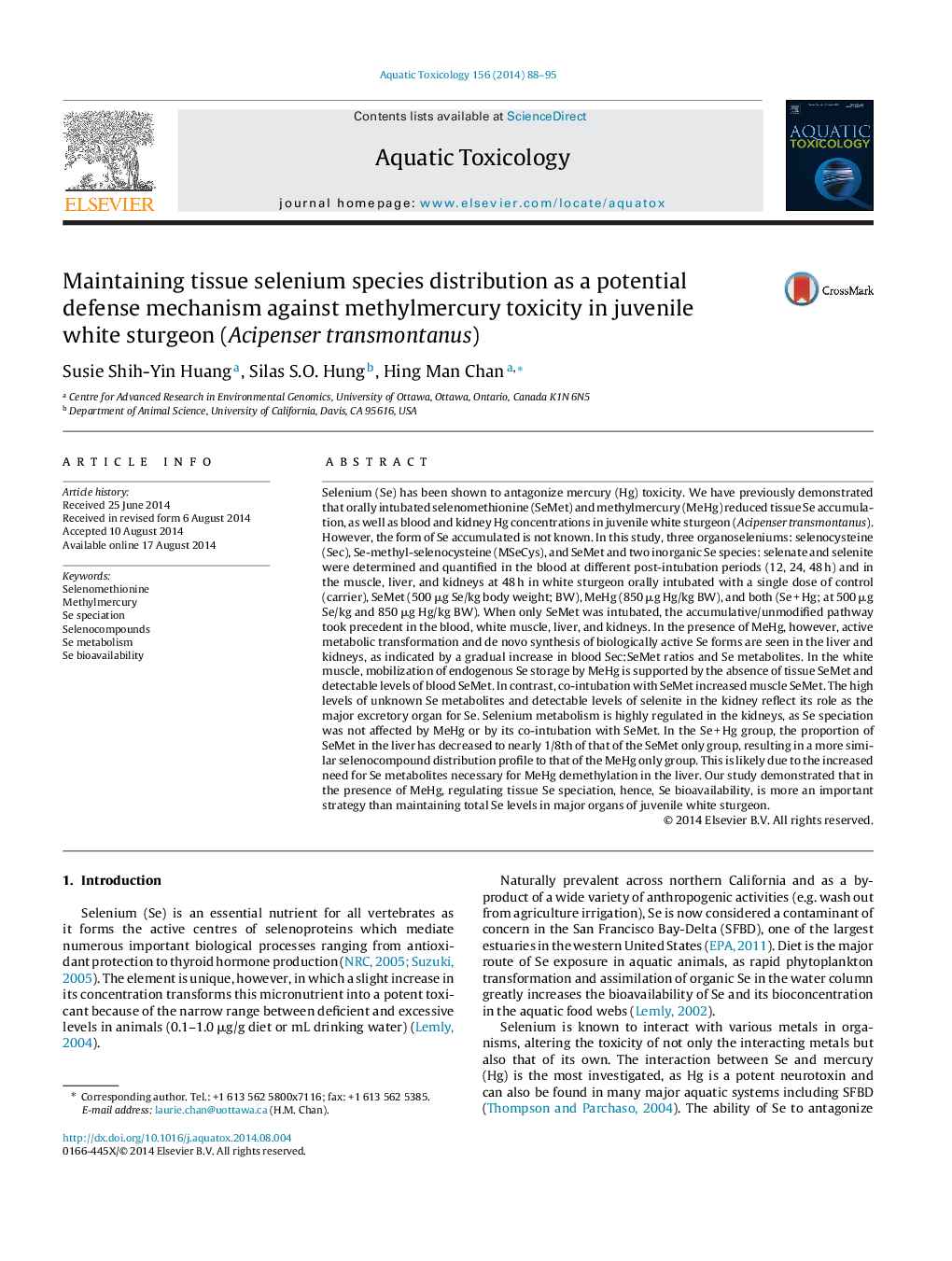| Article ID | Journal | Published Year | Pages | File Type |
|---|---|---|---|---|
| 4529127 | Aquatic Toxicology | 2014 | 8 Pages |
•MeHg exposure mobilized endogenous Se from storage.•Co-exposure to MeHg increased de novo synthesis of biologically active Se forms in most tissues.•MeHg exposure resulted in transformation of the exogenous SeMet in the liver.•Selenocompound distribution in the kidneys was not affected by the exposure to MeHg.•When exposed to MeHg, maintaining levels of certain Se species is more important than total [Se].
Selenium (Se) has been shown to antagonize mercury (Hg) toxicity. We have previously demonstrated that orally intubated selenomethionine (SeMet) and methylmercury (MeHg) reduced tissue Se accumulation, as well as blood and kidney Hg concentrations in juvenile white sturgeon (Acipenser transmontanus). However, the form of Se accumulated is not known. In this study, three organoseleniums: selenocysteine (Sec), Se-methyl-selenocysteine (MSeCys), and SeMet and two inorganic Se species: selenate and selenite were determined and quantified in the blood at different post-intubation periods (12, 24, 48 h) and in the muscle, liver, and kidneys at 48 h in white sturgeon orally intubated with a single dose of control (carrier), SeMet (500 μg Se/kg body weight; BW), MeHg (850 μg Hg/kg BW), and both (Se + Hg; at 500 μg Se/kg and 850 μg Hg/kg BW). When only SeMet was intubated, the accumulative/unmodified pathway took precedent in the blood, white muscle, liver, and kidneys. In the presence of MeHg, however, active metabolic transformation and de novo synthesis of biologically active Se forms are seen in the liver and kidneys, as indicated by a gradual increase in blood Sec:SeMet ratios and Se metabolites. In the white muscle, mobilization of endogenous Se storage by MeHg is supported by the absence of tissue SeMet and detectable levels of blood SeMet. In contrast, co-intubation with SeMet increased muscle SeMet. The high levels of unknown Se metabolites and detectable levels of selenite in the kidney reflect its role as the major excretory organ for Se. Selenium metabolism is highly regulated in the kidneys, as Se speciation was not affected by MeHg or by its co-intubation with SeMet. In the Se + Hg group, the proportion of SeMet in the liver has decreased to nearly 1/8th of that of the SeMet only group, resulting in a more similar selenocompound distribution profile to that of the MeHg only group. This is likely due to the increased need for Se metabolites necessary for MeHg demethylation in the liver. Our study demonstrated that in the presence of MeHg, regulating tissue Se speciation, hence, Se bioavailability, is more an important strategy than maintaining total Se levels in major organs of juvenile white sturgeon.
